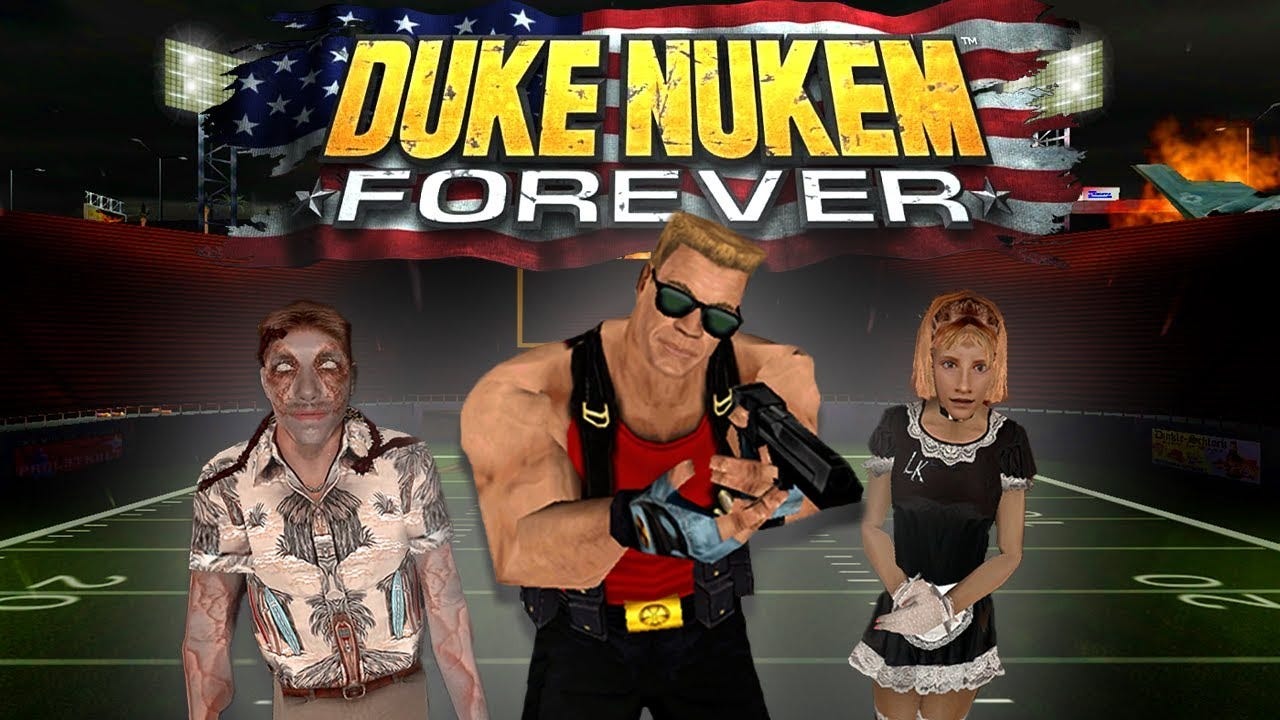Funding Preservation: Duke Nukem Forever 2001 Restoration Project
Restoration Project’s core resource is unpaid labor from 50+ global contributors, including industry veterans and modders
Introduction
The resurrection of Duke Nukem Forever 2001 through the DNF2001 Restoration Project represents a landmark case study in the financial challenges and innovations of community-driven game preservation. This paper analyzes the funding mechanisms behind this decade-spanning effort to revive an artifact of gaming’s "development hell," while proposing sustainable economic models for similar projects.
The Cost of Development Hell: A Financial Postmortem
Original Development’s Financial Collapse
The original Duke Nukem Forever (DNF) became a cautionary tale of mismanagement, with 3D Realms spending $20–30 million of internal funds over 14 years before its 2011 release. Director George Broussard’s insistence on chasing technological trends-switching engines from Quake II to Unreal Engine 1, then to a modified version-resulted in $12 million in sunk costs by 2009 alone. Take-Two Interactive’s failed $6 million publishing deal and subsequent lawsuit highlighted the risks of unfettered ambition without fiscal oversight.
The 2001 Build’s Lost Potential
The leaked 2001 build, developed on Unreal Engine 1, represented a $4–5 million investment before being abandoned during 3D Realms’ pivot to the Doom 3 engine. This version, showcasing advanced physics and cinematic storytelling, became a cultural white whale-preserved only through fan efforts after its 2022 leak.
The Restoration Project’s Funding Ecosystem
Volunteer Labor as Foundational Capital
The DNF2001 Restoration Project’s core resource is unpaid labor from 50+ global contributors, including industry veterans and modders. By 2024, the team had invested ~20,000 collective hours into reverse-engineering assets, rebuilding AI systems, and modernizing the engine. This mirrors preservation efforts like the Video Game History Foundation, which relied on 9 months of volunteer work to digitize 33% of its 24,000-item collection.
Crowdfunding:
While avoiding direct monetization (due to Gearbox’s IP ownership), the project utilizes:
Patreon: Generating ~$1,500/month from 300+ patrons for server costs and tool licenses.
ModDB Donations: 76% of the $8,600 revenue from 2023–2025 came via ModDB’s donation portal.
Institutional Grants: Missed Opportunities
Unlike the $113,277 grant awarded to The Strong Museum for game preservation, the DNF team has not secured institutional funding. The Epic Megagrant program-which funded archival projects requiring $50,000–$500,000-remains untapped despite the project’s use of Unreal Engine. Legal ambiguities around distributing modified IP likely deter grant-makers.
Financial Challenges in Community-Led Preservation
The "Free Labor" Paradox
Volunteer-driven models face burnout risks. The DNF team’s 2024 update noted three lead developers departing due to unpaid overtime, delaying the "Proving Grounds" update by six months. Similar projects like Black Mesa (which transitioned to paid staff after 8 years) demonstrate the limits of goodwill.
IP Ownership Barriers
Gearbox Software retains all commercial rights to Duke Nukem, prohibiting the team from:
Crowdfunding via Kickstarter
Selling restored copies
Licensing assets to third parties
Alternative Funding Models for Preservation
Corporate Sponsorship Programs
Platforms like Overwolf’s $50M Creators Fund offer grants to modders, but require demonstrable "ecosystem growth". The DNF project could partner with such programs by:
Integrating modding tools compatible with Overwolf’s CurseForge.
Documenting user engagement metrics (75,000+ ModDB downloads as of 2025).
Hybrid Nonprofit Structures
Adopting the Video Game History Foundation’s 501(c)(3) model the team could:
Apply for preservation grants (e.g., IMLS, NEH).
License restored assets to museums under "fair use."
Economic Impact and Preservation Value
Cost-Benefit Analysis
Compared to Gearbox’s $30 million loss on DNF, the Restoration Project’s $12,000 annual budget has delivered:
9 fully restored levels.
Modernized DirectX 9/OpenGL support.
200+ AI behavior scripts.
This 99.96% cost reduction highlights the efficiency of decentralized development.
Conclusion: Toward Sustainable Preservation Economies
The DNF2001 Restoration Project exposes both the fragility and resilience of community funding. While volunteer labor and microtransactions suffice for discrete projects, large-scale preservation demands hybrid models:
IP Holder Partnerships: Gearbox could adopt Microsoft’s Flight Simulator model, licensing legacy IP to modders for revenue sharing.
Government-Guaranteed Archives: Following the EU’s Digital Services Act, mandate publishers to fund preservation via 2% royalty levies.
Modder Unions: Platforms like ModDB could pool 5% of donation revenue into insurance funds for contributors.
As gaming’s cultural legacy grows, financing its preservation must evolve beyond passion-into systems valuing digital heritage as both art and infrastructure.





